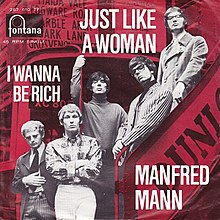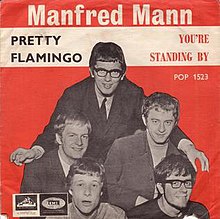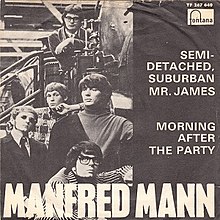Rock and roll music

"Just Like a Woman" is a song by the American singer-songwriter Bob Dylan from his seventh studio album, Blonde on Blonde (1966). The song was written by Dylan and produced by Bob Johnston. Dylan allegedly wrote it on Thanksgiving Day in 1965, though some biographers doubt this, concluding that he most likely improvised the lyrics in the studio. Dylan recorded the song at Columbia Studio A in Nashville, Tennessee in March 1966. The song has been criticized for sexism or misogyny in its lyrics, and has received a mixed critical reaction. Some critics have suggested that the song was inspired by Edie Sedgwick, while other consider that it refers to Dylan`s relationship with fellow folk singer Joan Baez. Retrospectively, the song has received renewed praise, and in 2011, Rolling Stone magazine ranked Dylan`s version at number 232 in their list of the 500 Greatest Songs of All Time. A shorter edit was released as a single in the United States during August 1966 and peaked at number 33 on the Billboard Hot 100. The single also reached 8th place in the Australian charts, 12th place on the Belgium Ultratop Wallonia listing, 30th in the Dutch Top 40, and 38th on the RPM listing in Canada.
Though a relative success in the United States, Dylan`s recording of "Just Like a Woman" was not issued as a single in the United Kingdom. However, British beat group Manfred Mann recorded a version of the song in June 1966 for their album As Is, during their first recording session together with producer Shel Talmy. In July, it became Manfred Mann`s first single to be released through Fontana Records. It was a hit in several European countries, reaching number 10 in the UK Singles Chart and number 1 in Sweden. The song received positive reviews from critics, several of whom highlighted Mike d`Abo`s vocal performance.
Leer másSingles chronology
Just Like a Woman
Manfred Mann
Discográfica: Columbia · Estudio de grabación: Columbia, Nashville · Productor: Bob Johnston
CHARTS
UK
AUS
NZ
SA
SWE
US
|
1
|
Just Like a Woman
Manfred Mann •
Manfred Mann •
w: Bob Dylan •
1966 /07 /29
|
2:50 |
|
|
|
2
|
I Wanna Be Rich
Manfred Mann •
Manfred Mann •
1966 /07 /29
|
2:31 |
|
Album
No se encontraron resultados
Album
| "Just Like a Woman" | ||||
|---|---|---|---|---|
 West German picture sleeve | ||||
| Single by Bob Dylan | ||||
| from the album Blonde on Blonde | ||||
| B-side | "Obviously 5 Believers" | |||
| Released | August 18, 1966 | |||
| Recorded | March 8, 1966 | |||
| Studio | Columbia, Nashville | |||
| Genre | ||||
| Length |
| |||
| Label | Columbia | |||
| Songwriter(s) | Bob Dylan | |||
| Producer(s) | Bob Johnston | |||
| Bob Dylan singles chronology | ||||
| ||||
| Audio | ||||
| "Just Like a Woman" on YouTube | ||||
Review
"Just Like a Woman" is a song by the American singer-songwriter Bob Dylan from his seventh studio album, Blonde on Blonde (1966). The song was written by Dylan and produced by Bob Johnston. Dylan allegedly wrote it on Thanksgiving Day in 1965, though some biographers doubt this, concluding that he most likely improvised the lyrics in the studio. Dylan recorded the song at Columbia Studio A in Nashville, Tennessee in March 1966. The song has been criticized for sexism or misogyny in its lyrics, and has received a mixed critical reaction. Some critics have suggested that the song was inspired by Edie Sedgwick, while other consider that it refers to Dylan`s relationship with fellow folk singer Joan Baez. Retrospectively, the song has received renewed praise, and in 2011, Rolling Stone magazine ranked Dylan`s version at number 232 in their list of the 500 Greatest Songs of All Time. A shorter edit was released as a single in the United States during August 1966 and peaked at number 33 on the Billboard Hot 100. The single also reached 8th place in the Australian charts, 12th place on the Belgium Ultratop Wallonia listing, 30th in the Dutch Top 40, and 38th on the RPM listing in Canada.
Though a relative success in the United States, Dylan`s recording of "Just Like a Woman" was not issued as a single in the United Kingdom. However, British beat group Manfred Mann recorded a version of the song in June 1966 for their album As Is, during their first recording session together with producer Shel Talmy. In July, it became Manfred Mann`s first single to be released through Fontana Records. It was a hit in several European countries, reaching number 10 in the UK Singles Chart and number 1 in Sweden. The song received positive reviews from critics, several of whom highlighted Mike d`Abo`s vocal performance.
Leer másBackground and recording
Al Kooper (pictured in 2009) traveled with Dylan to Nashville, and played organ on "Just Like a Woman".[3][4]
Bob Dylan released his fifth studio album Bringing It All Back Home in March 1965, followed by Highway 61 Revisited in August of that year.[5] In October, he began recording sessions for this next album Blonde on Blonde.[6] After several sessions in New York,[7] the recording was relocated to Nashville following a suggestion by Dylan`s producer Bob Johnston.[8] Two musicians from the New York sessions were retained; Dylan was accompanied by Al Kooper on his journey to Nashville and Robbie Robertson joined them there.[3]
The master take of "Just Like a Woman" was produced by Johnston and recorded at Columbia Studio A, Nashville, Tennessee on March 8, 1966.[9] Seven complete takes, and multiple rehearsals and partial takes were recorded. Take 18, the last of the session, was used on the album,[10] which was released on June 20, 1966.tbody,.mw-parser-output .col-begin>tbody>tr,.mw-parser-output .col-begin>tbody>tr>td{display:block!important;width:100%!important}.mw-parser-output .col-break{padding-left:0!important}}
|
|
"Just Like a Woman" is a song by the American singer-songwriter Bob Dylan from his seventh studio album, Blonde on Blonde (1966). The song was written by Dylan and produced by Bob Johnston. Dylan allegedly wrote it on Thanksgiving Day in 1965, though some biographers doubt this, concluding that he most likely improvised the lyrics in the studio. Dylan recorded the song at Columbia Studio A in Nashville, Tennessee in March 1966. The song has been criticized for sexism or misogyny in its lyrics, and has received a mixed critical reaction. Some critics have suggested that the song was inspired by Edie Sedgwick, while other consider that it refers to Dylan`s relationship with fellow folk singer Joan Baez. Retrospectively, the song has received renewed praise, and in 2011, Rolling Stone magazine ranked Dylan`s version at number 232 in their list of the 500 Greatest Songs of All Time. A shorter edit was released as a single in the United States during August 1966 and peaked at number 33 on the Billboard Hot 100. The single also reached 8th place in the Australian charts, 12th place on the Belgium Ultratop Wallonia listing, 30th in the Dutch Top 40, and 38th on the RPM listing in Canada.
Though a relative success in the United States, Dylan`s recording of "Just Like a Woman" was not issued as a single in the United Kingdom. However, British beat group Manfred Mann recorded a version of the song in June 1966 for their album As Is, during their first recording session together with producer Shel Talmy. In July, it became Manfred Mann`s first single to be released through Fontana Records. It was a hit in several European countries, reaching number 10 in the UK Singles Chart and number 1 in Sweden. The song received positive reviews from critics, several of whom highlighted Mike d`Abo`s vocal performance.
Background and recording
Al Kooper (pictured in 2009) traveled with Dylan to Nashville, and played organ on "Just Like a Woman".[3][4]
Bob Dylan released his fifth studio album Bringing It All Back Home in March 1965, followed by Highway 61 Revisited in August of that year.[5] In October, he began recording sessions for this next album Blonde on Blonde.[6] After several sessions in New York,[7] the recording was relocated to Nashville following a suggestion by Dylan`s producer Bob Johnston.[8] Two musicians from the New York sessions were retained; Dylan was accompanied by Al Kooper on his journey to Nashville and Robbie Robertson joined them there.[3]
The master take of "Just Like a Woman" was produced by Johnston and recorded at Columbia Studio A, Nashville, Tennessee on March 8, 1966.[9] Seven complete takes, and multiple rehearsals and partial takes were recorded. Take 18, the last of the session, was used on the album,[10] which was released on June 20, 1966.tbody,.mw-parser-output .col-begin>tbody>tr,.mw-parser-output .col-begin>tbody>tr>td{display:block!important;width:100%!important}.mw-parser-output .col-break{padding-left:0!important}}
|
|





